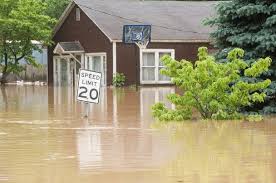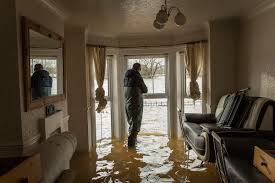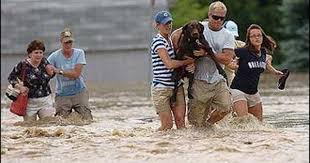
(UNDATED) – Indiana storms in the spring and summer can produce potentially damaging weather which can cause flooding. Winter storms also can make Hoosiers vulnerable. Ice dams and snowmelt can cause flash floods, which are generally not covered by regular homeowners’ insurance policies, and hailstorms can cause roof damage, leaving homes susceptible in the event of heavy rain.

In 2019, 226 events in Indiana were reported that included heavy rain, flash flooding and flooding, according to the National Oceanic and Atmospheric Administration (NOAA) database. Those events affected 50 Indiana counties causing property and crop damage.

“Backed-up storm drains and saturated ground all contribute to significant flooding when there is an excessive amount of rainfall,” said Indiana Department of Insurance Commissioner Stephen W. Robertson. ”Flooding can happen anywhere and the Department urges Hoosiers to review their insurance policies to make sure they understand their coverage before a disaster hits.”
What is flood insurance?
The most important thing to understand about flood insurance is what it isn’t. The flood peril is not typically covered through most homeowners and renter’s insurance policies. Flood insurance is a separate coverage you can purchase through an agent or insurer participating in the National Flood Insurance Program (NFIP). It is a program administered by the Federal Emergency Management Agency (FEMA), which works closely with more than 80 private insurance companies to offer affordable flood insurance to homeowners, renters, and business owners. In order to qualify for flood insurance, the home or business must be in a community that has joined the NFIP.

If your community doesn’t participate in the NFIP, contact your licensed insurance agent to ask about private flood insurance. If your agent can’t write a private flood policy, he or she may refer you to another licensed agent. If you choose a private flood insurance policy, shop around and compare coverage and premiums before you decide which policy to buy.
It is important to note that the NFIP insurance policy does not go into effect immediately after you purchase it. There is typically a 30-day waiting period unless a policy is bought at the same time as a newly purchased home.
Why do I need flood insurance?
The FEMA flood map service allows you to determine your flood risk. Risk levels are divided into three categories:
- High-risk areas have at least a 1 percent chance of flooding each year. Homeowners in these areas with mortgages from federally regulated or insured lenders are required to buy flood insurance.
- Moderate- to low-risk areas have less than a 1 percent chance of flooding each year, but there is still a possibility the area could flood. Flood coverage isn’t required in these areas, but it is recommended. Some mortgage lenders still require you to have flood insurance in non-high-risk areas.
- Undetermined risk areas are areas where flood-hazard analysis has yet to be conducted, but risk still exists.
It is important to note that approximately 33 percent of flood insurance claims come from outside of high-risk flood zones. Where it can rain, it can flood. According to FEMA, an inch of water in a home could cause more than $27,000 in damages. If you experience flooding and have not purchased flood insurance, you might experience financial ruin.

Contact your insurance provider to learn more about flood insurance, to learn if your community participates in the NFIP or to get a quote.
What should I do in the event of a flood?
- Have a plan. Learn the evacuation routes in your community and designate a point of contact in another state in the event your family is separated. If you are staying in your home during a flood event, go to the highest level of your home. If you are outdoors, move to higher ground and take shelter, if necessary.
- Prepare your home. Move items you want to protect to a higher floor and prepare to turn off your electricity.
- Store your insurance information in a safe place. Regularly update your homeowners or renters insurance and maintain a home inventory to keep a record of your possessions. Also, keep track of records and receipts. (MyHome Scr.APP.book: Apple Store or Google Play)
- Keep insurance agent and company contact information handy. In the event of a flood, make contact with your insurer as soon as possible when it’s safe. Your policy may require you to notify the company within a certain time frame.
- Take pictures of any property damage. Try to prevent further damage by cleaning and drying wet items.
- File a claim. Most insurance companies have a time requirement for reporting a claim, so contact your agent or company as soon as possible.
- Beware of fraud. Protect yourself by getting more than one bid from contractors and requesting references. Ask for proof of necessary licenses, building permits, insurance and bonding. Record the contractor’s license plate and driver’s license numbers and check for complaints with the Better Business Bureau (BBB).

About the Indiana Department of Insurance
The Indiana Department of Insurance (IDOI) protects Indiana’s insurance consumers by monitoring and regulating the financial strengths and market conduct activities of insurance companies and agents. The IDOI monitors insurance companies and agents for compliance with state laws to protect consumers and to offer them the best array of insurance products available. The IDOI also assists Hoosiers with insurance questions and provides guidance in understanding how insurance policies work.



